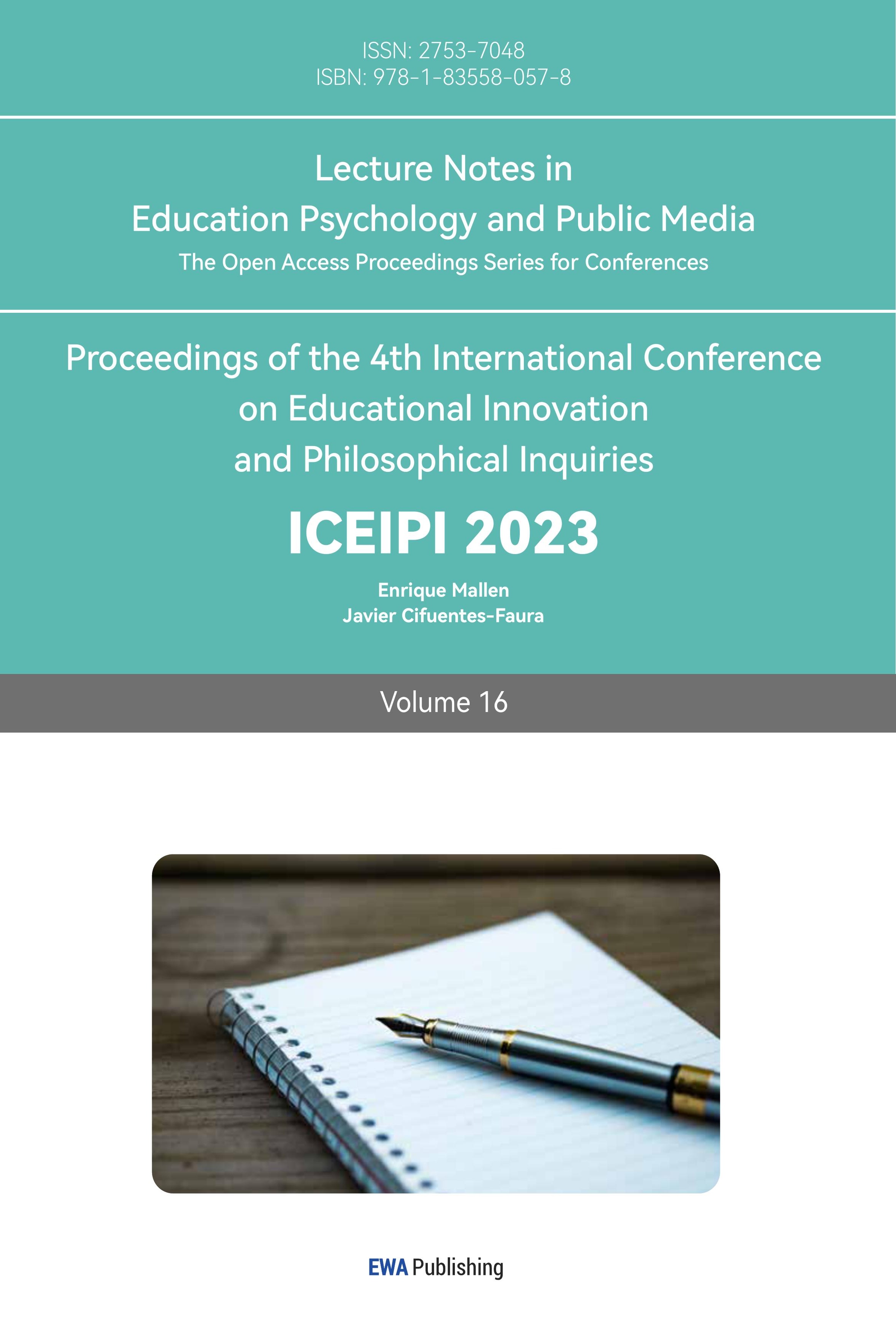References
[1]. Li. L., Hao J.J. (2022) The criminalization boundary of fabrication and intentional dissemination of false information in online social platforms. Jing Chu Academic Journal, 23(03): 56-60+75.
[2]. Lin. H. (2021). The improvement of the legal system of online rumor governance.Administrative Law Research,4:69-81.
[3]. Liu. Y. (2021) Research on the Criminal Law System of Online False Information. Chongqing: Southwest University of Science and Technology.
[4]. Liu. X.H. (2023) The dilemma and response of criminal regulation of online rumors.Legal Expo,1:142-144.
[5]. Yu. B. (2022) Criminal regulation of online rumors that disrupt public order.Journal of Taishan University,44(02):70-78.
[6]. Yao. F.S. (2022) Research on the Lawful Governance of Online Rumors:The Practice of Criminal Law.Guangxi Social Sciences,7:15-23.
[7]. Lin. Z.M. (2022) Research on the criminal law system of online rumors.Legal Expo,27:73-75.
[8]. Chen. X.l. (2021) Types of cybercrime and its judicial determination.Rule of Law Research,3:3-16.
[9]. Kang. T.K. (2023) Legal regulation of online rumor crime based on criminal law perspective.Legal Expo,5:142-144.
[10]. Liao. B.,He. X.B. (2015) On the criminal system of online false information.Application of Law,3:37-42.
[11]. Jiang. S.H. (2012) The formation, transmission and public opinion guidance mechanism of online rumors.Chongqing Social Sciences,6:12-20.
[12]. Xu. Y.Q.,Sun. P. (2023) Research on the criminal law system of online rumor crime in public emergencies.Journal of Shaanxi Institute of Administration,37(01):93-97.
[13]. Huang. C. (2023) Research on the controversy of judicial recognition of the crime of online rumor-mongering and provoking trouble.Journal of Taiyuan University of Technology(Social Science Edition).2:1-8.
[14]. Xu. Y. (2020) On the criminal responsibility of “online violence” for suicide and death.Political Science and Law Forum,38(01):132-142.
[15]. Zhang. X.,Chen. X.Y. (2021) On the legitimacy of the establishment of criminal liability for suicide death caused by “online violence”.Law and Society,9:25-26.
Cite this article
Tang,Q. (2023). A Separate Conviction Study on Online Rumors and False Information Dissemination in China. Lecture Notes in Education Psychology and Public Media,16,111-117.
Data availability
The datasets used and/or analyzed during the current study will be available from the authors upon reasonable request.
Disclaimer/Publisher's Note
The statements, opinions and data contained in all publications are solely those of the individual author(s) and contributor(s) and not of EWA Publishing and/or the editor(s). EWA Publishing and/or the editor(s) disclaim responsibility for any injury to people or property resulting from any ideas, methods, instructions or products referred to in the content.
About volume
Volume title: Proceedings of the 4th International Conference on Educational Innovation and Philosophical Inquiries
© 2024 by the author(s). Licensee EWA Publishing, Oxford, UK. This article is an open access article distributed under the terms and
conditions of the Creative Commons Attribution (CC BY) license. Authors who
publish this series agree to the following terms:
1. Authors retain copyright and grant the series right of first publication with the work simultaneously licensed under a Creative Commons
Attribution License that allows others to share the work with an acknowledgment of the work's authorship and initial publication in this
series.
2. Authors are able to enter into separate, additional contractual arrangements for the non-exclusive distribution of the series's published
version of the work (e.g., post it to an institutional repository or publish it in a book), with an acknowledgment of its initial
publication in this series.
3. Authors are permitted and encouraged to post their work online (e.g., in institutional repositories or on their website) prior to and
during the submission process, as it can lead to productive exchanges, as well as earlier and greater citation of published work (See
Open access policy for details).
References
[1]. Li. L., Hao J.J. (2022) The criminalization boundary of fabrication and intentional dissemination of false information in online social platforms. Jing Chu Academic Journal, 23(03): 56-60+75.
[2]. Lin. H. (2021). The improvement of the legal system of online rumor governance.Administrative Law Research,4:69-81.
[3]. Liu. Y. (2021) Research on the Criminal Law System of Online False Information. Chongqing: Southwest University of Science and Technology.
[4]. Liu. X.H. (2023) The dilemma and response of criminal regulation of online rumors.Legal Expo,1:142-144.
[5]. Yu. B. (2022) Criminal regulation of online rumors that disrupt public order.Journal of Taishan University,44(02):70-78.
[6]. Yao. F.S. (2022) Research on the Lawful Governance of Online Rumors:The Practice of Criminal Law.Guangxi Social Sciences,7:15-23.
[7]. Lin. Z.M. (2022) Research on the criminal law system of online rumors.Legal Expo,27:73-75.
[8]. Chen. X.l. (2021) Types of cybercrime and its judicial determination.Rule of Law Research,3:3-16.
[9]. Kang. T.K. (2023) Legal regulation of online rumor crime based on criminal law perspective.Legal Expo,5:142-144.
[10]. Liao. B.,He. X.B. (2015) On the criminal system of online false information.Application of Law,3:37-42.
[11]. Jiang. S.H. (2012) The formation, transmission and public opinion guidance mechanism of online rumors.Chongqing Social Sciences,6:12-20.
[12]. Xu. Y.Q.,Sun. P. (2023) Research on the criminal law system of online rumor crime in public emergencies.Journal of Shaanxi Institute of Administration,37(01):93-97.
[13]. Huang. C. (2023) Research on the controversy of judicial recognition of the crime of online rumor-mongering and provoking trouble.Journal of Taiyuan University of Technology(Social Science Edition).2:1-8.
[14]. Xu. Y. (2020) On the criminal responsibility of “online violence” for suicide and death.Political Science and Law Forum,38(01):132-142.
[15]. Zhang. X.,Chen. X.Y. (2021) On the legitimacy of the establishment of criminal liability for suicide death caused by “online violence”.Law and Society,9:25-26.









